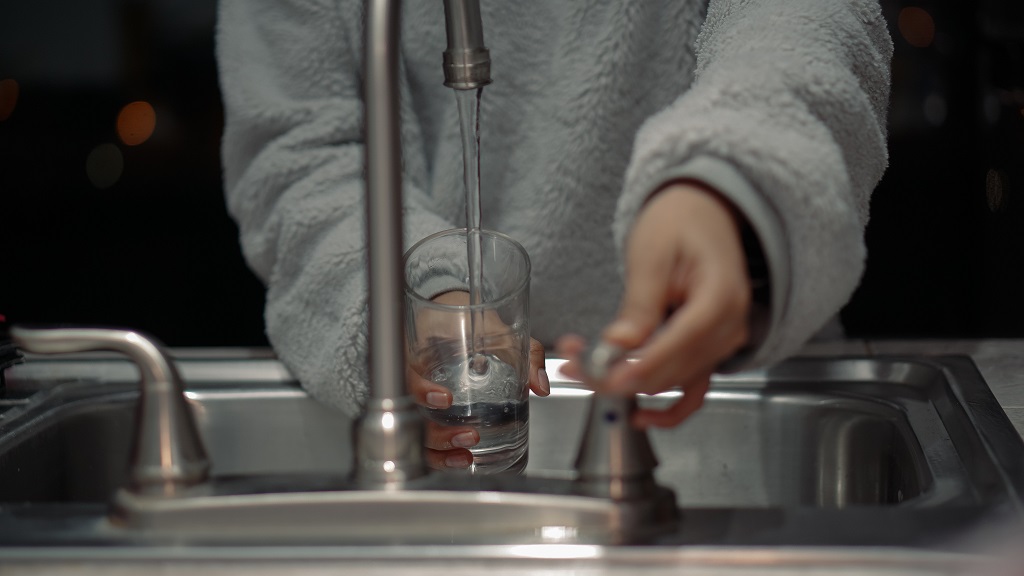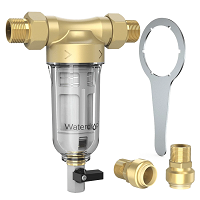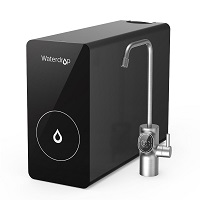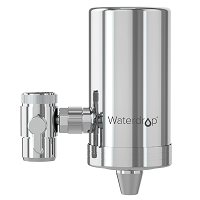Water is the base point of all living things on earth. Access to clean and safe drinking water should be a basic human right. Yet, with water crisis news like Flint, Michigan, it is time to ask questions about the safety of the water that comes out of the tap.
Potential Contaminants in Your Tap Water
Water that comes from the tap sink is treated at the local water plant to some degree, however, chemical agents like chlorine will be added during this treatment process in order to remove the contaminants in the water. Therefore, the city water that flows out of the tap normally contains chemical leftovers.
Besides, water travels through the city’s plumbing grid and then through the pipes before it gets to your tap. If there are any impurities in the pipes or plumbing system, which is likely the case, they could end up showing in what you drink.
Examples of substances found in tap water by way of various studies over the years include:
- Arsenic
- Aluminum
- Lead
- PFAS
- Chlorine
- Fluoride
How to Clean The Tap Water
Boiling
Boiling is the most well-known method to purify tap water as the process can efficiently kill parasites, germs, and bacteria.
The major advantage of boiling is that it is inexpensive and can be achieved anywhere with a heat source. Boiled water can kill most microorganisms. In a word, it is a cheap and easy way.
While boiling may sound like an ideal choice, the method does not totally eliminate contaminants. For example, it cannot eliminate the nitrates used in fertilizers that can enter the water system and heavy metals like mercury and lead as mentioned above in the city plumbing systems.
Distillation
Distillation might be the oldest purification method, the history of distillation can date back to the time of the Ancient Greeks in AD 200. It is probably the most effective method of getting pure water. Raw water is turned into steam by boiling and then touches the surface, the impurities are left behind and only pure H2O is provided.
Though distillation is a certain way to get clean water, it requires a lot of energy consumption, time waiting for the process to complete, and a series of equipment to proceed. It also destroys essential minerals in the water.
Filtration
The term “filtration” means the process of separating water from contaminants. It might be the most prevalent purification method as water filters could be easily acquired at home. The filtration performance is highly dependent on the size of the pore size, usually measured in microns. An ideal filtration pore size is around 0.2 microns.
In order to set up a filtration system, charcoal and activated carbon are arranged in cylindrical or round blocks. When water goes through the carbon, the contaminants and chemicals are absorbed by the carbon, allowing clean water to go through.
The filtration process removes impurities like heavy metals, sediments, parasites, and bacteria. It is a quick process and does not alter the taste of the water.
Water Filtration: What Are Your Options
When comparing the three ways to remove the impurities from the tap water, the filtration process wins out for its efficiency. It is an economical way of getting safe drinking water from the tap. Below are some recommendations for home use water filters.
Whole House Pre-Filter
The whole house pre-filter is the first layer of home water filtration, especially when well water is the main water source. It can effectively filter out sediments and other large particles in the water, which not only enhances the quality of your drinking water but also prolongs the service life of your second layer water filtration system.
The Waterdrop whole house spin down sediment filter is an advanced pre-filter model that achieves excellent filtration performance with its 50-micron 316L molybdenum alloy. The backwash feature of the filter provides extended filter life as well as enhanced filtration capacity.
Reverse Osmosis System
If you have the city municipal water as your water source, then the reverse osmosis system would be the most certain solution for safe drinking water.
The filtration nature of a reverse osmosis system is through the reverse osmosis membrane. It is a semi-permeable membrane which the unclean water is “pressured through.” The membrane contains pores of a specific size. The pores are only big enough to allow the passage of water molecules while blocking other foreign components like pyrogens, bacteria, organics, and dissolved salts.
The Waterdrop D6 RO water filter system is most of the most prevailing RO system on the market. It adopts a 5-in-1 composite reverse osmosis filter with the DOW reverse osmosis membrane.
This powerful filter is capable of reducing most of the harmful contaminants from water, including TDS, lead, chlorine, salt, nitrates, PFAS, lead, sodium, chromium, benzene, etc.
Water Filter Pitcher
The water filter pitcher is probably the most popular water filtration product. It doesn’t require any installation and can be carried around easily. Most of the water filter pitchers adopt filtration media like activated carbon block that could remove the chlorine and lead in water.
If you decide to opt for the water filter pitcher, make sure you check the following factors:
- Filtration media
- Filter service life
- Capacity
- Product material
Faucet or Sink-Top Systems
This type of filter belongs to the countertop water filter category that connects to a water line to filter water. Most of them would be connected to the existing faucet in your kitchen sink.
The advantage of a faucet or sink-top filter is the ability to offer almost unlimited filtered water, though the quality of the water would not be comparable to that of other water filters. The limited filtration accuracy is the downside of this type of filter.







